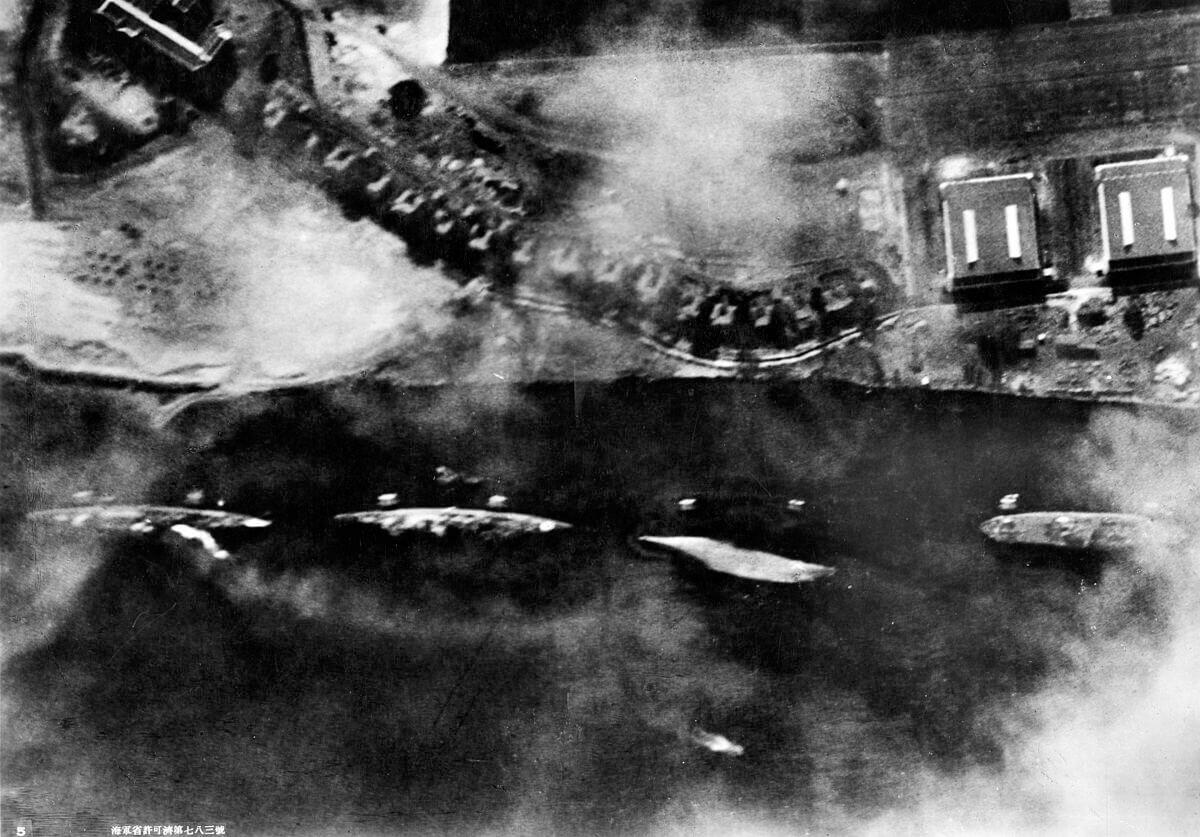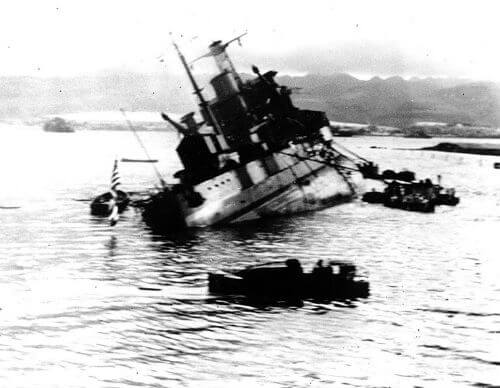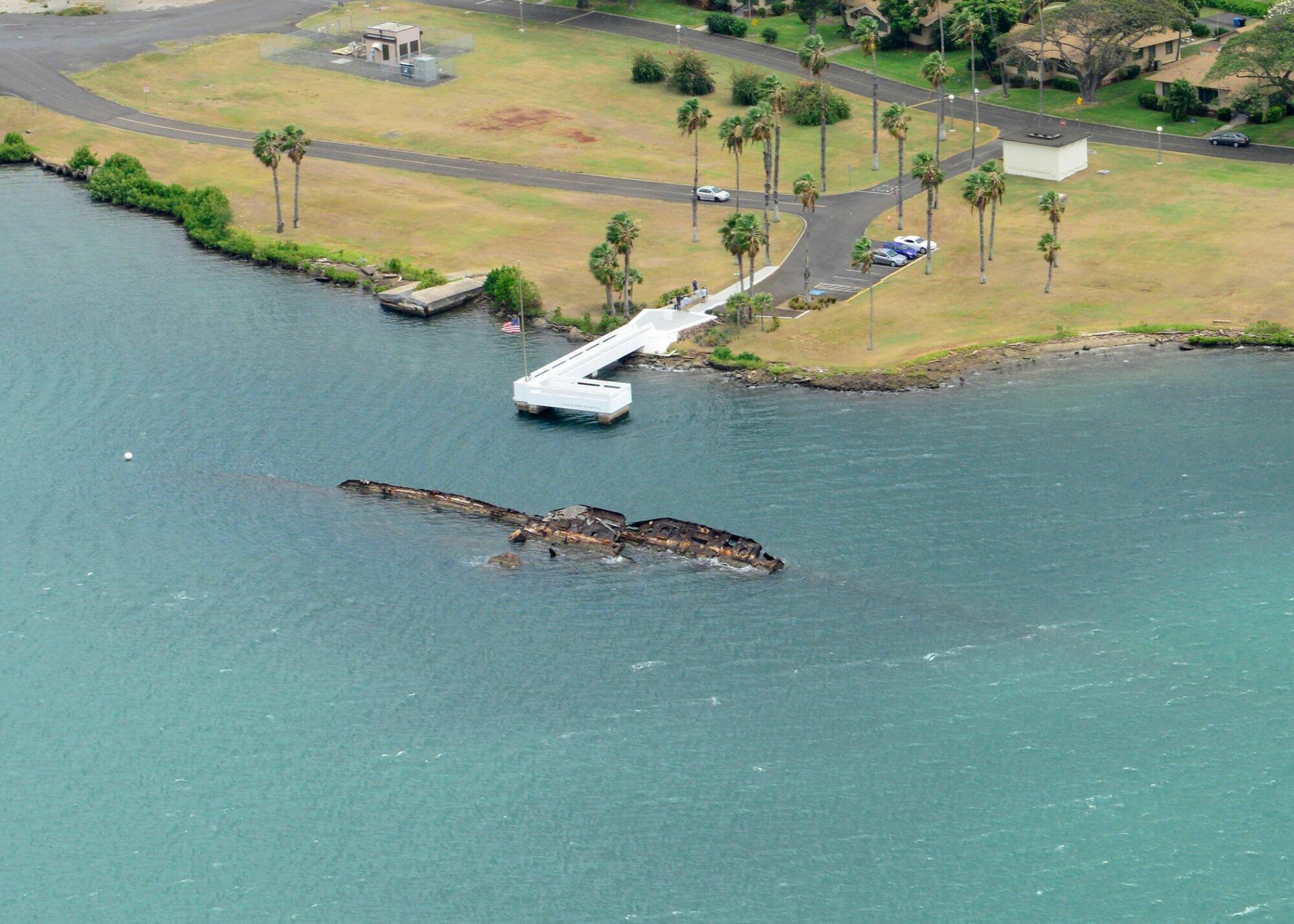Why Was the USS Utah Targeted?
Given the intent of the surprise Japanese attack on Pearl Harbor on December 7, 1941, a question pops up when the events of the day are examined. It’s widely known that Japan’s decision to attack the naval base at Pearl Harbor was born from a desire to cripple the US Pacific Fleet by destroying the battleships that were anchored there. These ships made up the bulk of American power in the Pacific. Over the course of the attack, two waves of fighters and bombers nearly accomplished that task; but amid the chaos, they also directed their attention to an unexpected target that wasn’t moored alongside the other battleships: the USS Utah (AG-16 at the time of the attack).
Anchored on the western side of Ford Island forward of the light cruiser USS Raleigh (CL-7) and aft of the seaplane tender USS Tangier (AV-8), Utah was no longer the warship she once was. The USS Utah was launched as a Florida-class battleship in 1909 and commissioned two years later, with the hull designation BB-31. Utah served the nation well, having fought in the Mexican Revolution and World War I. In 1931, ten years before the Pearl Harbor attack, she was demilitarized and converted into a target ship as part of the London Naval Treaty, which limited the size of naval forces around the globe.
The Loss of the USS Utah
During the attack on Pearl Harbor, Utah was fatally struck by Japanese torpedoes. In order to solidify its superiority in the Pacific, Japan needed to dismantle the American warships, but its attackers wasted vital resources on sinking a demilitarized target ship. Though it could have been viewed as a result of the chaotic situation, it seems unlikely that Japanese bombers accidentally fired on Utah, especially considering how far she was from the primary targets along Battleship Row.
Utah, by this time designated AG-16, was equipped with anti-aircraft guns for training, but in terms of being useful at sea, she wasn’t the same battleship that had once protected Bantry Bay from German raiders. It could be argued that the Japanese didn’t know of Utah’s demilitarization, but considering they had years of intelligence on ship movements in Pearl Harbor, it seems unlikely that the attackers were unaware that she wasn’t worth wasting torpedoes on. After the attack, officials did their best to figure out why Utah had come under attack, coming up with various theories, none of which were very compelling.
Whatever the cause was, the USS Utah was sunk and became one of three total losses at Pearl Harbor, along with the USS Oklahoma (BB-37) and USS Arizona (BB-39). Like Arizona, she was never refloated or repaired. For more than 75 years, she’s remained where she settled after an unsuccessful attempt to right her.
A Case of Mistaken Identity
The answer did eventually come, though it would take four years. At the close of the war, after Japan had surrendered, participants in the Pearl Harbor assault, including officers, claimed that there was no confusion to the fleet when it came to Utah’s status. They had known she had been demilitarized and posed no threat. Captain Mitsuo Fuchida, leader of the first wave of attacking aircraft at Pearl Harbor, specifically ordered that Utah not be attacked. While most in the first wave followed Fuchida’s orders, not every Japanese pilot was on the same page.

Aerial view of the ships on the west side of Ford Island L-R: USS Detroit, USS Raleigh (listing from torpedo strike), USS Utah (capsized), and USS Tangier
Not long after the assault started, a torpedo struck Utah. It was a case of mistaken identity on the part of a young Japanese pilot. In the midst of the fray, the pilot thought Utah was an active battleship and fired on her. Immediately after, five more torpedoes were launched against Utah. One of these hit its target and another missed, hitting Raleigh.
For the Japanese, this proved problematic. The attack on Pearl Harbor was well planned, but it required that every pilot perform flawlessly. Due to the limited resources available to them far from their home port across the Pacific in Japan, the two attack waves had to be accurate with their payloads.
The torpedoes fired on Utah were deemed a waste, given the limited number available. It may have only been six torpedoes, but considering the majority of the American fleet returned to service before the end of the war, they could potentially have destroyed a third or even fourth battleship, crippling US naval power in the Pacific and potentially costing them victory.
The Fate of the USS Utah
The torpedoes may have been wasted, but they did what they were intended to and sank the USS Utah. Her rusted hulk is still present in Pearl Harbor, partially submerged off the coast of Ford Island. Years after the war ended, a memorial was created nearby to commemorate the 64 officers and crew who were lost on December 7, 1941.
Though most Pearl Harbor exhibits and memorials are open to the public, access to the USS Utah Memorial is currently limited to active military and their families.









